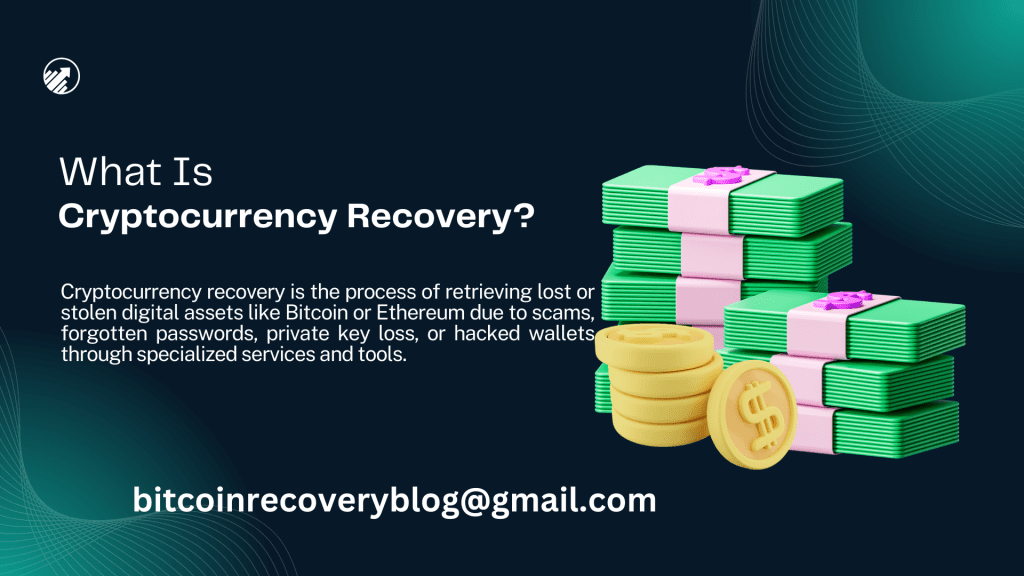What is Bitcoin Recovery? How to Retrieve Lost BTC Fast
Introduction
Bitcoin is often praised for its security and decentralization, but what happens when it’s lost or stolen? Many investors assume that once Bitcoin is gone, it’s gone forever. However, in many cases, Bitcoin recovery is possible through blockchain forensics, transaction tracing, and private key recovery.

In this guide, we’ll cover:
✅ What is Bitcoin recovery?
✅ How to recover lost or stolen Bitcoin
✅ Can stolen Bitcoin be recovered?
✅ Best Bitcoin recovery services available
If you need immediate recovery assistance, USDT Recovery Pro specializes in professional Bitcoin retrieval services.
What is Bitcoin Recovery?
Bitcoin recovery refers to the process of retrieving lost, stolen, or inaccessible BTC using specialized tracking and recovery methods. Since Bitcoin transactions are irreversible, professional recovery experts use blockchain analysis and legal strategies to trace and reclaim lost funds.
Bitcoin can be lost in multiple ways, including:
🔴 Forgotten Wallet Passwords – Losing access to encrypted wallets.
🔴 Hacked Accounts – Unauthorized transactions due to security breaches.
🔴 Phishing Scams – Fake websites stealing private keys.
🔴 Lost Private Keys – Without a private key, Bitcoin is inaccessible.
🔴 Fraudulent Exchanges – Fake investment platforms stealing BTC.
If your Bitcoin is lost or stolen, acting fast increases recovery chances!
How to Recover Lost or Stolen Bitcoin
1. Track Your Bitcoin Transactions
Check your wallet activity using blockchain explorers:
🔹 Blockchain.com Explorer – For BTC transaction tracking.
🔹 BTCScan – To trace Bitcoin addresses.
2. Report the Incident Immediately
🔹 Notify Exchanges – If BTC was sent to an exchange, contact support.
🔹 File a Report with Authorities – Agencies like the FBI’s IC3 handle crypto fraud.
🔹 Use a Professional Recovery Service – Experts like USDT Recovery Pro specialize in fund tracing.
3. Secure Your Wallet to Prevent Further Losses
🔹 Enable two-factor authentication (2FA) on all crypto accounts.
🔹 Move remaining BTC to a cold storage hardware wallet like Ledger or Trezor.
🔹 Use a new secure device to access your wallet.
Can Stolen Bitcoin Be Recovered?
Yes, stolen Bitcoin can be recovered under the right circumstances. Methods include:
✔ Blockchain Forensics – Tracing Bitcoin transactions using advanced analysis.
✔ Legal Action – Filing cases to recover funds from exchanges or hackers.
✔ Private Key Recovery – Unlocking lost wallets with specialized tools.
✔ Professional Bitcoin Recovery Services – USDT Recovery Pro specializes in tracking and recovering lost funds.
Best Bitcoin Recovery Service
For lost or stolen BTC, expert recovery services offer the best solutions:
What is Bitcoin recovery
🔹 USDT Recovery Pro – Specializes in blockchain forensics and stolen asset recovery.
🔹 Chainalysis – A blockchain intelligence firm assisting in crypto recovery.
🔹 Wallet Recovery Services – Helps recover lost private keys and encrypted wallets.
Preventing Bitcoin Loss in the Future
To protect your Bitcoin from future loss, follow these security tips:
✔ Use a Hardware Wallet – Cold storage devices offer the highest security.
✔ Enable Multi-Factor Authentication (MFA) – Add extra layers of security to accounts.
✔ Beware of Phishing Scams – Never click on suspicious links or emails.
✔ Back Up Your Private Keys – Store them in a safe offline location.
For professional Bitcoin security and recovery services, visit USDT Recovery Pro.
FAQs
Can Bitcoin be recovered after a hack?
Yes, with blockchain forensics, transaction tracing, and expert assistance from USDT Recovery Pro.
What should I do if my Bitcoin is stolen?
Act fast: track transactions, report the theft, and consult a recovery expert.
How do professional Bitcoin recovery services work?
They use blockchain analysis, transaction tracking, and cybersecurity expertise to recover lost funds.
Conclusion: Recover Your Lost Bitcoin Today
Losing Bitcoin is frustrating, but it doesn’t have to be permanent. Whether your funds were stolen, lost, or inaccessible due to a forgotten password, expert recovery services can help.What is Bitcoin recovery
For the best Bitcoin recovery solutions, contact USDT Recovery Pro today.
What is Bitcoin recovery
